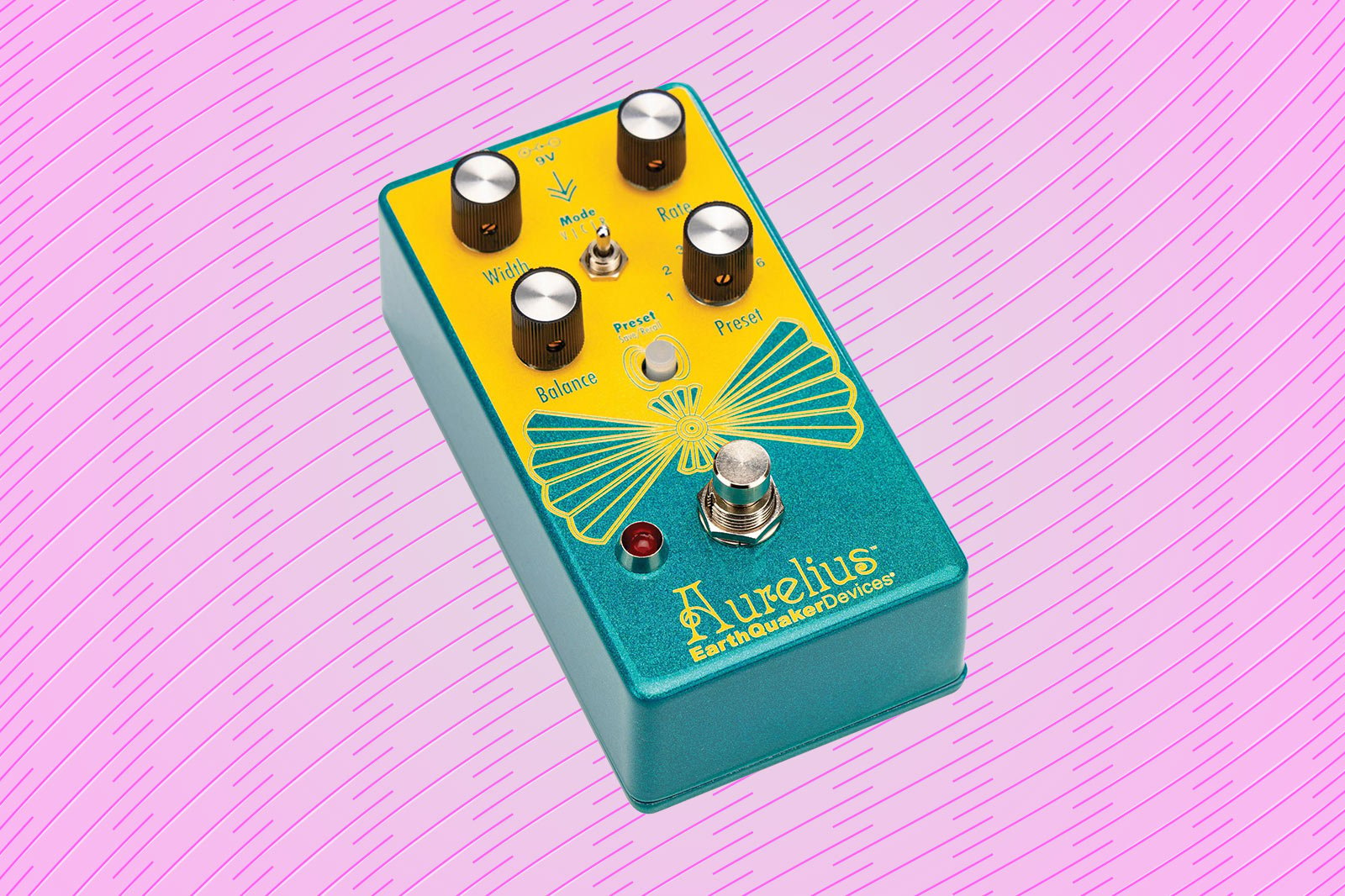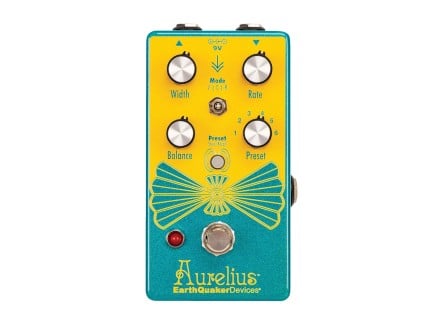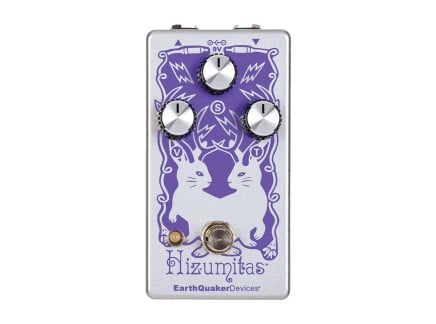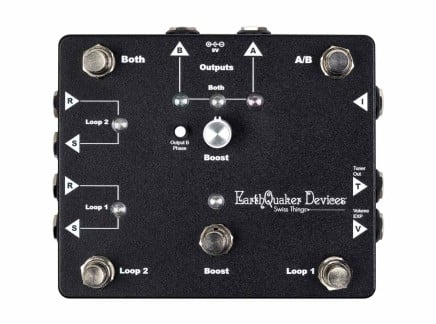EarthQuaker Devices has just dropped their newest effect pedal: Aurelius, a lush take on the rich sounds of chorus, flanger, vibrato, and even rotary sounds. EQD themselves have even mentioned that this pedal is inspired by the legendary BOSS CE-1, which was not only the first chorus pedal to be produced but also remains one of the most highly regarded. That's quite a legacy to take on, but we have no doubts that EarthQuaker Devices have positioned Aurelius to not only provide convincing recreations of the original pedal but push their own spin on this classic sound as well.
This article gives a quick overview of Aurelius, exploring its different modes and its handy new preset system. In addition, we've got a brief history lesson on chorus and the CE-1 for all of the effects nerds out there, so crank up your favorite 80s pop or rock guitar record and keep reading to dive into what Aurelius has to offer.
Source of Inspiration: the BOSS CE-1 Chorus Ensemble
EarthQuaker Devices cites the CE-1 Chorus Ensemble pedal, the very first pedal ever released by BOSS, as a source of inspiration for Aurelius. Though BOSS is most known for their iconic compact stompbox design, the CE-1 came from a short-lived line of larger format effects pedals resembling pedals from their parent company Roland, such as the AP-7 Jet Phaser. But the CE-1 was a hit right out of the gate and solidified chorus as a standard effect for guitarists and instrumentalists of all types
First of all, what is a chorus effect? Chorus is an audio effect that emulates the sound of multiple instruments playing in unison. Outside of precise, digitally-generated tones, acoustic sounds can often get very close to being in tune with each other, but never exactly. The result is not dissonance, but rather a dimensional, full-bodied sound. As implied by the name of the effect, compare the sound of a lone singer with a chorus of voices, or a solo violinist to a string ensemble.
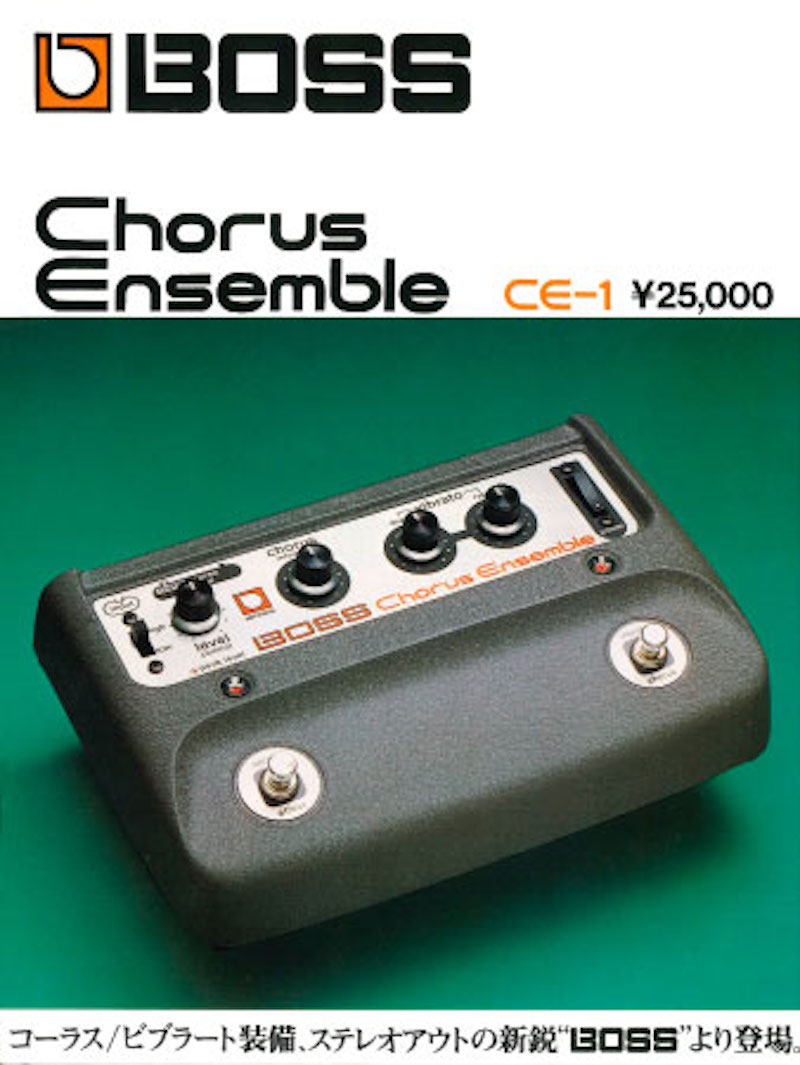 Japanese advertisement for the BOSS CE-1, courtesy of BOSS/Roland
Japanese advertisement for the BOSS CE-1, courtesy of BOSS/Roland
Before the 1970s, chorus effects were limited to capturing an ensemble or relying upon studio tricks like overdubs and doubletracking, or the manipulation of tape playback and standalone tape delay units. However, by making use of new (at the time) technology known as bucket-brigade devices (BBD), developers at Roland were able to create short, barely-perceptible audio delays using just a single chip within a circuit. By blending this delayed signal with the unaffected source and adding the ability to continuously shift the delay time with an LFO (low-frequency oscillator), it was suddenly possible to create convincing chorus effects in a compact fashion!
Roland's first use of chorus in a product appeared in 1975 with their fittingly-named Jazz Chorus amplifiers, but the effect was so desirable that it was repackaged into the CE-1 a year later. Though it would become popular with guitarists, BOSS designed the CE-1 to be flexible with any type of instrument thanks to its high and low sensitivity switch and variable level control. The CE-1 features two modes: chorus—which produces a slower but still thick modulation as defined by the Intensity control, and vibrato—which features dedicated Depth and Rate controls for faster, more intense sounds. For richer sounds, the CE-1 also offers dual outputs for stereo applications, but it still sounds great in mono!
There's perhaps no better example of the CE-1's sound than the shimmering guitar tones of Andy Summers from The Police. In turn, this influenced waves of guitarists to adopt the effect for their own rich, swirling guitar sounds throughout the 1980s and beyond. Chorus has remained in the BOSS lineup ever since the CE-1's release, ranging from the compact CE-2 to the current Waza Craft CE-2W, while also appearing in Roland's Juno line of synthesizers and later iterations of the Space Echo, such as the RE-301.
Of course, many others have offered their own take on the chorus effect through different analog circuits, adopting digital techniques, and other variations on the concept with pitch shifters, detuning, and more. But the sound of the CE-1 holds a special place in the history of chorus effects and continues to be a guiding light in new designs—including EarthQuaker's brand-new Aurelius.
Aurelius Overview
Unlike the CE-1, it should immediately be noted that Aurelius is a digital chorus, not analog. This shouldn't be viewed as a bad thing though, because extra care was placed into designing Aurelius to sound thick and warm just like the CE-1. Plus, its digital nature affords further flexibility and advantages that wouldn't be possible with an analog circuit—at least not as easily or affordably. It's also a distinctly different pedal from EQD's existing chorus: Sea Machine, which has a number of knobs tailored for dialing in tones that stretch the idea of what it means to be a chorus pedal. Aurelius is simply way more straightforward.
Let's start with the basics. Aurelius offers three primary controls for dialing in your chorus sound: Width and Rate for dialing in the breadth and speed of chorus modulation, as well as a Balance control that provides a dry/wet blend of unprocessed and chorus signals. Thanks to the addition of an expression port on the side, any of these three parameters may be assigned to external control by an expression pedal. Dynamically blend in a chorus for dramatic effect, or sweep through different speeds or intensities of modulation—the choice is yours.
But Aurelius also features three different flavors of chorusing for a wide range of sounds and colors. Most like the CE-1, mode V (Chorus/Vibrato) features a short delay line modulated by a triangle LFO, and the entire range of CE-1 sounds can be found by tweaking Aurelius' parameters. In mode C (Chorus/Flanger), slower modulation speeds and a sine wave LFO offer more pronounced flanger-like timbres, especially as Width is turned up and introduces feedback. Finally, mode R takes a totally different approach by emulating the sound of a rotary speaker, such as a Leslie cabinet, for a distinct flavor of chorusing that's different from the rest of the sounds in Aurelius.
There's one more thing worth highlighting on Aurelius—the inclusion of a preset system! Presets aren't super common on EarthQuaker Devices products, currently only appearing on Pyramids and Astral Destiny, but Aurelius marks the first time they've appeared in a compact pedal from EQD. Given the great variety of sounds that chorus effects can produce, it's a worthwhile addition to Aurelius, making it a great choice for small pedalboards that need to provide a range of different sounds.
To facilitate managing presets, Aurelius has two operating modes: Live Mode, indicated by a green LED on the Save/Recall button, and Preset Mode, indicated by red. To save a preset, rotate the Preset dial to one of the six available slots, set the parameters, mode switch, and expression assignment as desired, then hold down the Save/Recall button until the LED flashes red—easy! Recalling presets may be done from Live mode by turning to the desired preset slot and holding the footswitch until the Save/Recall LED switches to red, or simply tap the switch to jump between Live/Green and Preset/Red modes.
Three Voices of Modulation Bliss
Chorus is a favorite effect for many—it livens up guitars, basses, synthesizers, or any instrument like no other. But as such a broad type of effect, any good chorus pedal needs to provide variety and versatility in its parameters and settings, and that's exactly what Aurelius offers. EarthQuaker succeeded in making Aurelius not only a great-sounding chorus pedal but one with utility that is sure to earn a spot on many pedalboards. Personally, we can't wait to grab Aurelius and go for a swim in its rich modulations.

